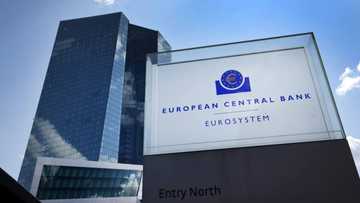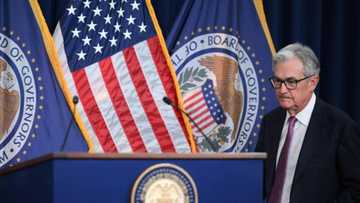US economy picks up steam despite expectations of slowdown

Source: AFP
Unlock the best of Legit.ng on Pinterest! Subscribe now and get your daily inspiration!
The US economy defied expectations to see growth pick up in the second quarter, according to government data released Thursday, supported by business investment and resilient consumer spending.
GDP growth in the world's biggest economy came in at an annual rate of 2.4 percent for the April-June period, said the Commerce Department, despite analyst expectations of a slower rate.
This was also an increase from the two percent rate in the first three months of 2023.
Although economists have been warning of a potential slowdown as the US central bank raised interest rates rapidly in the past year to tamp down demand and lower inflation, the economy has proven more resilient than expected.
In the first quarter, GDP growth was revised sharply higher to two percent -- from an initial estimate of 1.1 percent –- boosted by a stronger-than-anticipated consumer.
On Thursday, the rise in GDP "reflected increases in consumer spending, nonresidential fixed investment, state and local government spending" and other areas, said the Commerce Department in a statement.
PAY ATTENTION: Join Legit.ng Telegram channel! Never miss important updates!
But while there was an "upturn in private inventory investment and an acceleration in nonresidential fixed investment," contributing to the acceleration in GDP growth, this was partly offset by a downturn in exports and decelerations in consumer spending as well as in government spending.
'Positive trajectory'
Some analysts think the United States could see a mild recession in the second half of the year but this likelihood appears to be diminishing on data pointing to a strong labor market and low unemployment -- while inflation eases.
On Wednesday, Federal Reserve chair Jerome Powell told reporters that his staff is no longer forecasting a recession although they still see a "noticeable slowdown in growth starting later this year."
This came after the Fed raised the benchmark lending rate for an 11th time since March 2022.
"Growth is outpacing expectations even as the monetary policy stance has become restrictive," said Rubeela Farooqi, chief US economist at High Frequency Economics.
"A strong household sector that continues to benefit from positive job growth and rising real incomes should keep growth on a positive trajectory this year," she added.
As inflation cools, "real wage growth is turning positive," providing a tailwind to consumer spending, said Gregory Daco, chief economist at EY-Parthenon, in a note this week.
But the economy "continues to face significant headwinds from persistently elevated prices and costs, tightening credit conditions and rising interest rates," he warned. "Union strikes, student loan repayments and corporate debt vulnerabilities also represent downside risks."
Source: AFP



